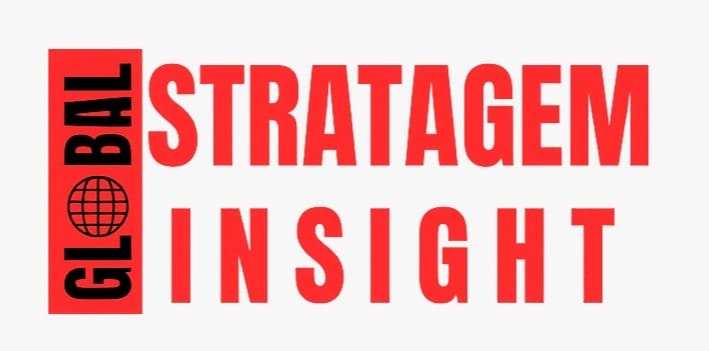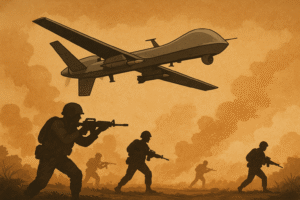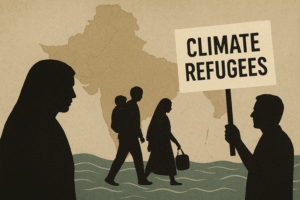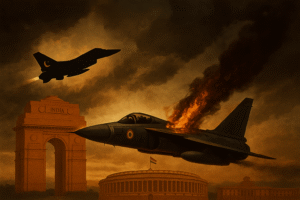Academic Institutions or Ideological Battlegrounds.

A visual juxtaposition of education and ideology in Pakistan—highlighting the coexistence and tensions between academic institutions and diverse religious identities in shaping societal narratives.
As Pakistan struggles to settle the deadly clashes between political insecurity and resurgence of terrorism, it has to concoct its strategies for something turbulently portentous: a chronic societal efflux of extremism in the country. The plethora of sociopolitical, cultural, and psychological enigmas has altered the idea of how societies used to aptly operate.
It not only created a puzzling ballgame for the state’s postural conflict adeptness, but a strategized moralistic decay in the society, jagging it into socially isolated and truculent compartments. While inviting multiple reported factors to ably contribute and blend in the mix of systematic extremism, extending from party grievance politics to thrill-seeking social behavior in academic institutions.
From political incorrectness to bullying normality on campus through cyclical aggressive remarks, systematic ragging, and intemperate outbursts for dominance assertion, to creating an outright chaotic divergency of sociocultural and political segments in the society, all ring alarms over the impulsive behavior of this country’s inhabitants. In educational institutions, the intensive praxis of methodical violence for egocentric or groupthink objectives has created a perplexed environment of not only domineering exclusivism, but a glorified manifestation of toxic masculinity and mutated social factionalism.
The hierarchal chart of extremism stretches from basic peer pressure to informational conformity, or ideological bias to political reactionism; escalatory gender antagonism to systematic classism, all fuel incendiary remarks; display an epidemical national level crisis at every step of our societal infrastructure. Also, the envenoming of culture wars between different subsets of the society has led to largescale violence in the past and continues to haunt and complicate mitigation strategies in the present.
Dealing with this brisking social meltdown has become complicated because it mixes up with multiple societal ills. Starting from hate speech to impulsive echo chambers, intensified regressive notions to disruptive social sentiments, all fan extreme scuffles both on cyber and public grounds. Also, this multifaceted social ill is fueled by other concerning catalysts involving socioeconomic deprivations, novelty seeking attitude, power hunger, and notoriety building.
This opens an apt gateway for terrorists and other antisocial entities to adeptly blend in the society to ‘proselytize’ and ‘recruit’ politically charged voices. Consequently, it created a jigsaw puzzle for law enforcers to tackle covert organized crimes, terrorist tactics by non-state entities, and revenge seeking behavior by violent student groups, disturbing the operational security protocols and schematics.
The issue of administrative inadvertence exhibited by the top bureaucratic brass and academic administration to curtail extreme voices based on sectarian and ethnocentric divisions or political devotion is a catalyst that adds fuel to fire. The absence of preemptive and affirmative mechanisms of the top executive class to create an aperture focused to ably dispel reinforced propagandist and extremist ideologies from socio-physical spaces has to be addressed by incorporating a diverse set of swift jurisprudential mechanisms.
Intensive efforts in revolutionizing educational curriculums by integrating a myriad set of sociopolitical and national issues to deradicalize and depolarize young voices have become an imperative social prerequisite to uphold democratic, civic, and moral practices. Despite over-legislative periodic methods, the failures in mitigating unreasonable biases, cycles of violent outbursts, and political imperceptivity have become an issue of ‘legislative disjuncture’ in the country.
To understand the ambit of this sociopolitical quandary, its genesis needs to be understood whether it is individualistic or out-and-out group concentrated, intensified either by group influence or internalized projected narcissism. This argument not only highlights the twofold dimension of this issue, but stresses on the extensive intermix of groupthink outbursts with individual projections.
The Social Identity Theory is applied by most social psychologists and analysts to dissect such social puzzles. Especially relating it to framing bias to identity strains, socially hostile compartments to identity-based uncontrollably aggressive groups that intensify ideological wars. These social enigmas deftly aggravate existing uncharted fault lines and various interpersonal issues related to cultural paranoia, identity dilemma, and social conformity.
The overall ‘need’ of gaining social acceptance, prestige, power, and recognition disrupts the cycle of natural progression through a mutated form of Maslow’s Hierarchy of Needs which overtly fuels political incorrectness, social alienation, and existential insecurity among students.
To strategically mitigate this societal turbulence and uphold social morality, reactive outbursts and general lawlessness must be dealt with a ‘zero-tolerance’ administrative approach with far-reaching repercussions on disciplinary violations. With no regard of campus and cyber rules, such sensitive and impulsive activities display excessive egotistical tendencies, presence seeking tactics, propaganda endorsement, and ideological symbolism, aiming at dehumanizing outgroups and subverting campus laws.
The use of organized violence and viewing ‘rival’ groups as a threat on ethno-political, cultural, or sectarian grounds has to be curtailed by outrightly dismissing troublemakers and conflict promoters from academic environment through a rigorous disciplinary framework, starting from cutting down rakish social media pages to expelling power-hungry groups from campus.
To broadly manage the hostility and constant rifts between student groups and academic administration, a multispectral approach would integrate a win-win scenario at both ends of the graphic split. Starting from on campus interdepartmental collaboration on sociopolitical issues would create a conducive atmosphere for cross-functional academic ventures.
The periodic incorporation of seminars and workshops would result in forming academic alliances and student societies from diverse disciplines, aiding to reduce interpersonal conflicts and general aloofness among students. This would progressively extend its boundaries by certifying or engaging students in research projects, managerial tasks, academic tours, or internships.
Trailblazer mindset and collective grandiosity has become an escalatory issue after executive indecision of downrightly banning student unions from functioning in the political landscape impulsively heated the political climate. Reinforcing student clubs in academic institutions and promoting on and off campus community-engagement activities of tree plantation drives, campus clean-up campaigns, leadership courses, and a holistic shift in media coverage of these initiatives rather than reporting regular clashes between student groups would adeptly reduce narrative amplification on cyber and public grounds.
Educational institutions, particularly colleges and universities, should preemptively invest in treating this social ill before any massive outbursts jolts the social system with substantial proportions. Such events have already taken place, and they continue to do so which highlights the urgency of incorporating a rigorous set of administrational, educational, and communal operational policy mechanisms to prevent politically-driven antagonistic narratives and overall hatred between opposite groups.
Academic administration should hire campus counsellors and psychiatrists for students affected by culture shock, emotional burnout, social alienation, and overall psychological issues of mental health importance. Meanwhile, these practices should also be extended towards faculty members to undergo sessions related to mental health, civic literacy, and emotional sensitivity to tactfully address issues related to students, while ensuring strict disciplinary actions on law violations.



